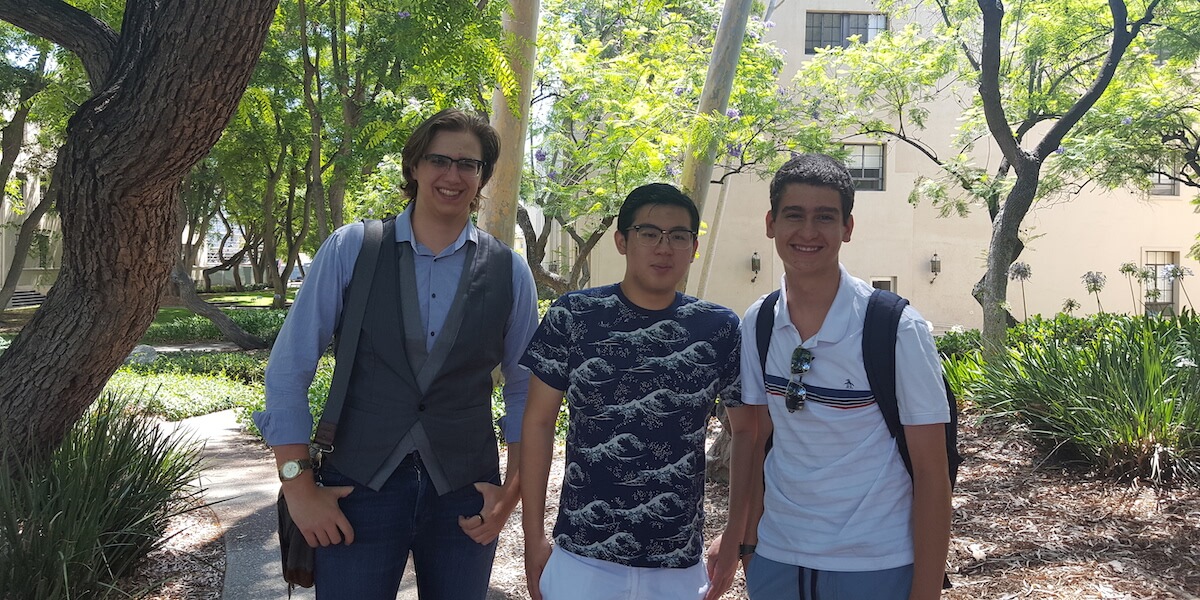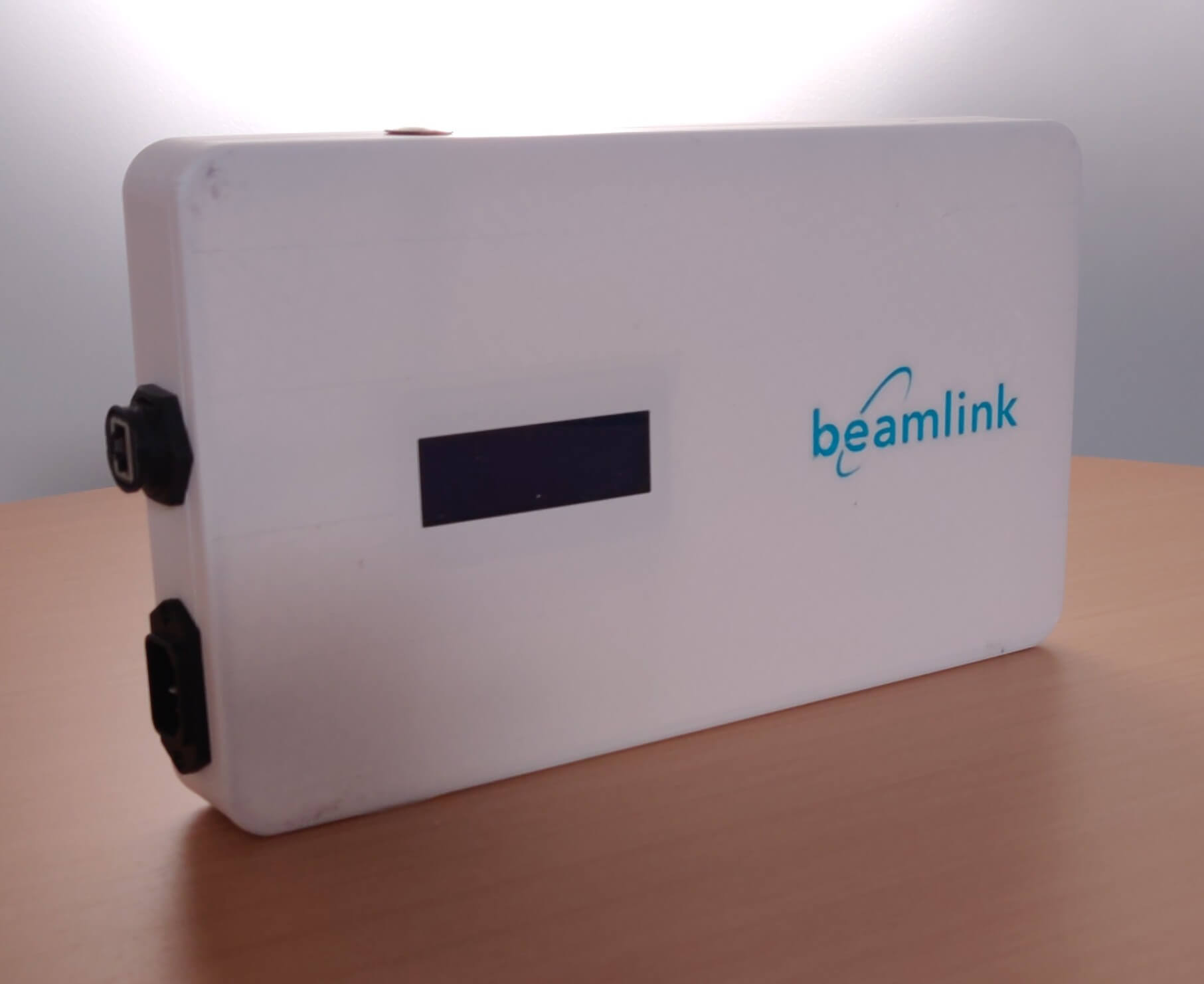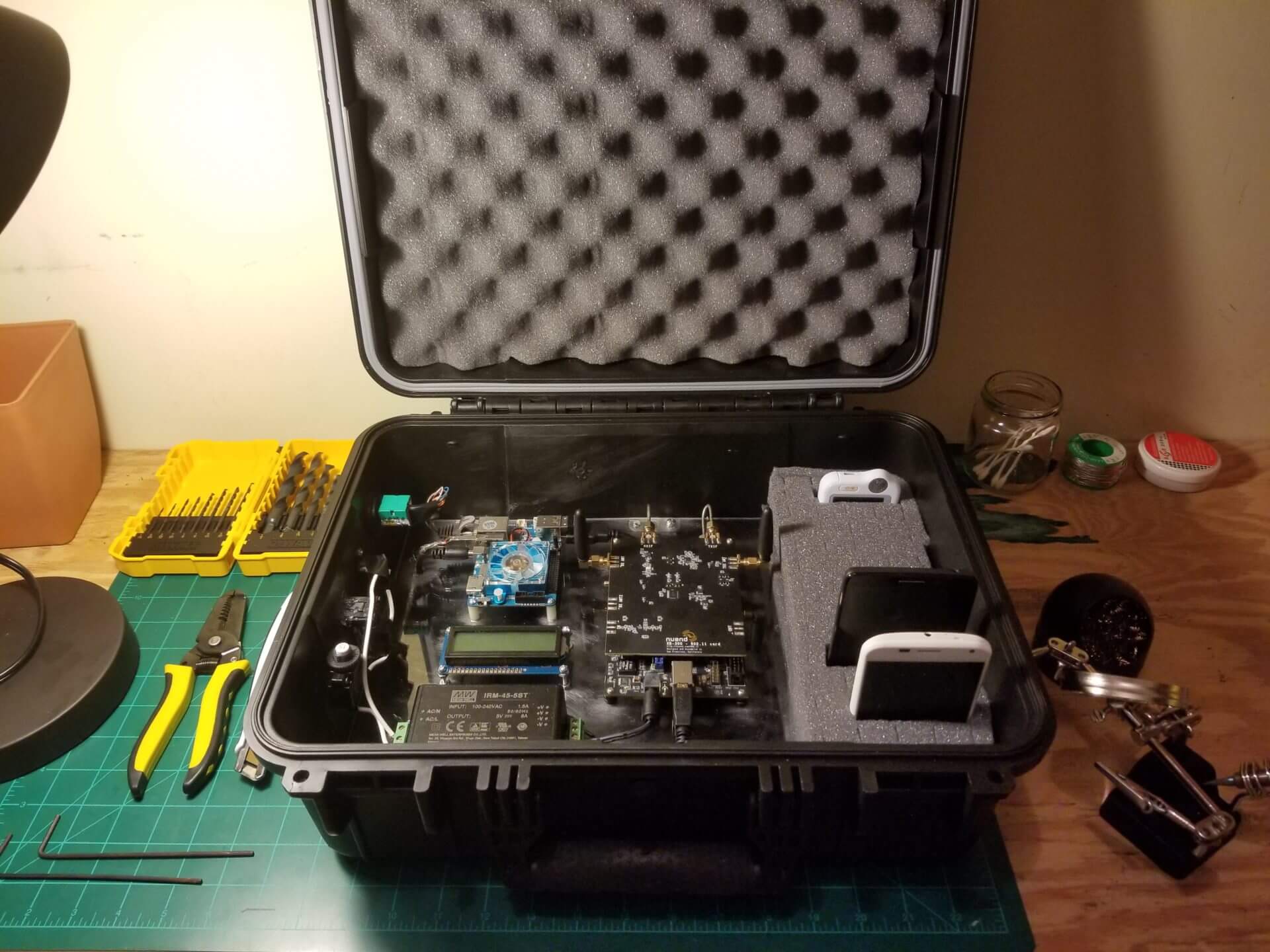
Beamlink co-founders (from left to right): Mateo Abascal, Max Gunara and Arpad Kovesdy. PHOTO/DORA SZILAGYI.
When Hurricane Maria, a deadly Category 5 hurricane, hit Puerto Rico in September 2017, it caused catastrophic destruction that cost billions of dollars and thousands of lives. As residents attempted to communicate with emergency services and with loved ones, they found it impossible; nearly all of Puerto Rico’s cellular infrastructure was taken out with the storm.
Eight months later, many residents still reportedly did not have reliable cellular or internet service, severely debilitating their ability to navigate daily life. Of those who died, one-third suffered from delays in receiving medical care. For many, these delays stemmed from an inability to contact medical providers or access information on how or where to get help.
Storms like Hurricane Maria disproportionately impact developing countries and rural areas—places where infrastructure is not fortified or reinforced. In particular, the high cost of cell towers and the logistical difficulties in transporting them to devastated areas cause formidable hurdles and delays in replacing felled infrastructure. To USC Viterbi undergraduate Arpad Kovesdy, an aerospace engineering major, it seemed there should be a lower cost, more easily deployed solution available.
“Telecom companies are not incentivized to get people back online quickly, because it’s largely cost prohibitive. But that doesn’t mean there isn’t a need for free and easy access to cell service for those impacted by a disaster,” Kovesdy said.
Along with partners Max Gunara, a junior studying business administration at USC, and Mateo Abascal, a junior studying physics, mathematics, and Near Eastern studies at Johns Hopkins, Kovesdy founded Beamlink, a company dedicated to providing international calling, SMS and data services for a lower cost than existing solutions and on the fly—without any network requirements.
“Most cell towers are really huge, typically placed on buildings or masts. It can cost millions of dollars per tower. What we see is in cases like natural disasters, when these towers are destroyed, is that it’s really hard to repair them and really expensive to get equipment into disaster zones. To combat this, we bring in a microcell—something the size of a briefcase—that has a couple of miles of range at most.”

The newest 3d-printed prototype of Beamlink’s portable cell tower. PHOTO/MATEO ABASCAL.
The prototype uses software defined radio and a satellite modem or ethernet to enable voice calls, SMS and data services. It also networks with nearby microcells.Of course, in order for these microcells to be effective, Kovesdy says you have to deploy hundreds or thousands at once. “It’s much easier to create a network that is spread out than get to towers that are far away.” It also means that if one tower breaks down, you can replace it easily without disturbing service in other areas.
While the actual concept of a microcell is not unique—stadiums, for example, use these to help boost signals—Beamlink uniquely creates an independent cellular network that people can connect to without even a sim card. Once the microcell is set up, users can register themselves and access the internet immediately.
Inspiration for Innovation
The project initiated at the Min Family Social Entrepreneurship Challenge in 2017, where Kovesdy said they were encouraged to solve an important, global problem. Armed with data from research and interviews with hurricane victims, the team set out to create the world’s first ultraportable, low cost, cellular base station for use in disaster relief and in rural connectivity scenarios.
At first, it wasn’t easy to mimic what big telecommunications companies were doing, but over the years, open source code has helped alleviate this burden. At the same time, satellite internet has become much cheaper and viable for connecting users in rural or disaster areas.
After many iterations of initial prototypes, the team saw their product connect to an actual phone number on an existing, pay cellular network. The current prototype—Beamlink One—can connect up to 20 cell phones and support their simultaneous use of calling and internet features at a range of 1.4 kms for a cost of under $1,000. The prototype also has an external battery pack that lasts up to seven hours and an online dashboard, which allows remote configuration and control of the unit.
In the past year, Beamlink has garnered financial and technical support from the Mozilla Wireless Innovation for a Networked Society Challenge, where they were awarded an honorable mention and $10K, and the annual USC Stevens Student Innovator Showcase, where the team was awarded $15,000 in-kind for strategic counseling and patent filing support from Pillsbury Winthrop Shaw Pittman LLP.

Inside the Beamlink case: a cellular base station, test mobile phones and a portable EKG device. PHOTO/ARPAD KOVESDY.
Applications and Aspirations
Kovesdy and his partners see two main customer bases for their product. First: governments or aid organizations working with individuals in a disaster zone. “In this case, they might only need the microcells for a couple of months and then they can tear them down and deploy them elsewhere, based on need.”
Cellular providers like it for a different challenge, Kovesdy said. The issue of “last mile connectivity” is one that has made it difficult for end users in rural areas to gain access to the internet. Providers, which count on spreading out the cost of infrastructure over numerous customers on a network, cannot do this in more remote connectivity situations, where the end user is far away from the main hub of the network. Instead of relying on a single cell tower, providers could use the Beamlink One to decentralize service and increase network reliability at a lower cost.
Now that the Beamlink team has completed its core technology, it plans to begin testing the device in Indonesia and Puerto Rico, areas that have faced connectivity issues in the past. Prior to this, the device has been tested in periods of days; this would expand testing to a duration of a couple months at one time. Once the product is further refined, they hope to begin manufacturing on a larger scale.
Of lessons learned thus far, Kovesdy said: “Building something tangible and doing it in a team environment is really fulfilling. It’s also important to me that whatever we do, we solve an important problem first. We want to drive up the number of people connected per dollar spent with the goal of 100 percent connectivity. It’s more fulfilling than pouring resources into developing something like 5G so we can stream Netflix on our phones faster.”
In that vein, Beamlink’s motto has been solution and not tech-oriented. “If there’s cool technology involved, great,” Kovesdy said. “But the worst thing you can do is attack a problem and pour a lot of resources into it without knowing the root cause. We don’t want to solve something just because there is cool technology involved. We want to help bring about important change.”
Published on January 28th, 2020
Last updated on April 8th, 2021







